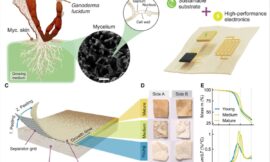Great scientists of the 20th century from Germany, Austria and Switzerland brought incredible advances to physics, why there and not in other parts of the world?
When you study physics in high school or university, certain names begin to be familiar, sometimes difficult to pronounce, others less so. Planck’s constant. Gaussian bell. Bernoulli’s theorem. Heisenberg’s uncertainty principle. Einstein’s theory of special relativity. Schrödinger’s wave equation (and his famous cat From him).
Many of these principles, constants, and equations are named after their discoverer, and many of these great scientists who lived and worked in the early 20th century came from Germany, Austria, and eastern Switzerland, so they were united by more than just language. , but a great cultural heritage.
In the 18th century, Prussia, a German state occupying present-day northern Germany and parts of Latvia, Lithuania, Poland, and Russia, led the way in sponsoring Enlightenment thought, an idea they had borrowed from cultural and scientific leadership. from France. There were also major movements in the smaller states of Bavaria, Saxony, Hanover, and the Palatinate. The princes of these states carried out fiscal, administrative, judicial, educational, cultural and economic reforms in general.
These reforms bore fruit in the centuries that followed. Wagner’s music, Schiller’s poetry, and Goethe’s works are some of the many lights that emerged in art and the humanities. Science in German did not take long to follow this path of expansion, especially in physics, mathematics, chemistry and engineering. Before World War II, Germany was the country with the most Nobel Prize winners in scientific fields and the most prominent in natural sciences.
The German language was an important scientific language from the late 19th century until the end of World War II. After the war, the careers of many scientific researchers and teachers, which had ended because of Nazism, led to the diaspora of these great minds. The American Paperclip operation and the Soviet Osoaviakhim operation captured many of the brilliant scientists who had fled the horrors of war and the persecution of the Jews, and continued their careers in exile.
Here are some of the famous universities in Germany, Switzerland, and Austria that made important contributions to physics, along with some notable physicists who worked at them:
Technical University of Munich
This university, very focused on engineering and technology, has given several Nobel prizes in physics, such as Rudolf Mössbauer and Ernst Ruska.
Ludwig Maximilian University of Munich
It has a long history of excellence in physics and has been the birthplace of many famous physicists, including Max Planck, Werner Heisenberg, and Arnold Sommerfeld.
University of Heidelberg
With a great tradition in natural sciences, especially in physics, it has given the world physicists of the stature of Philipp Lenard, discoverer of cathode rays, Walther Bothe and Wolfgang Ketterle, all of whom have been awarded the Nobel Prize in Physics.
Eth Zurich
This Swiss university is one of the best in Europe for engineering and technology, with a strong focus on research. Among the most prominent physicists who worked on it are Albert Einstein, Wolfgang Pauli.
University of Zurich
It is known for its strong research programs in physics, especially in the areas of astrophysics and quantum optics. Notable physicists who worked include Albert Einstein, who earned his PhD there and worked at the university for several years in the early 20th century.
University of Vienna
This Austrian university has a long history of excellence in physics and has been the birthplace of many famous physicists including Erwin Schrödinger, Lise Meitner and Wolfgang Pauli.
Polytechnic University of Vienna
It has a strong physics department focused on research in the areas of experimental physics, theoretical physics, and biophysics. Among the most prominent physicists who worked there is Viktor Franz Hess, discoverer of cosmic rays and Nobel Prize in Physics in 1936.
We owe to the work of these scientists countless advances that today save and improve lives, from the microelectronics that make computers possible to MRI diagnostic machines in hospitals. they also have a constant tribute every time a physics student, in any country in the world, mispronounces their surnames.

